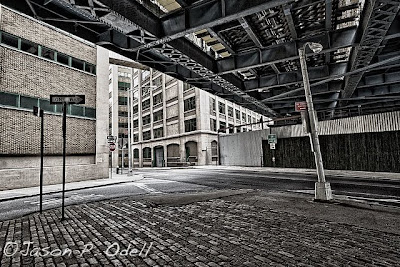I don't normally offer commentary on my Friday posts, BUT ... Jason's my kid, and I wish him well in his endeavors. After all, I'm counting on him to care for me in my dotage. If you're interested in photography, you'll find the article interesting, and even if you're not a taker of pictures, I guarantee you'll enjoy looking at his work. And if you ARE a taker of pictures, there's a link to his newest 'how to' book at the end of this post.Sunrise at Bear Lake, Rocky Mountain N.P., CO
High Dynamic Range Photography
Jason P. Odell, Ph.D.
A fundamental challenge for all photographers is that neither film nor digital cameras can reproduce the same range of tones as seen by the human eye. The range of dark shadows and bright tones that can be recorded-- either by film, a digital sensor, or the human eye is called dynamic range. When the dynamic range of a recording medium, like film, is smaller than what they eye can perceive, you will see areas of pure black or pure white in the image-- areas with no detail in the photograph. With traditional techniques (including digital photography), photographers have to make a conscious choice when they expose a scene with a range of tones that exceeds their camera’s dynamic range: Either allow shadows to “block up” as pure black, or allow highlights to “clip” as pure white. Alternatively, photographers could try to use filters to help “compress” the tones in a scene so that the details would be captured on their film or digital sensor.New Jersey skyline at sunset, Battery Park, NY.

Under the Manhattan Bridge, Brooklyn, NY















































